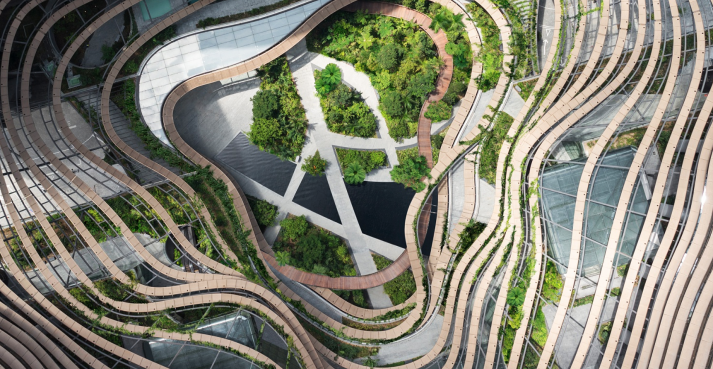The Buzz on Landscape Design
Table of ContentsSome Known Incorrect Statements About Landscape Design What Does Landscape Design Do?Examine This Report on Landscape DesignGetting My Landscape Design To Work
When designing a residential landscape, one of the most important action is to put a plan on paper. Creating a master plan will certainly conserve you time and cash and is more probable to lead to an effective style. Landscape Design. A master strategy is created with the 'design process': a step-by-step technique that takes into consideration the ecological problems, your needs, and the elements and principles of designThe five steps of the style procedure consist of: 1) conducting a website inventory and evaluation, 2) establishing your demands, 3) producing useful diagrams, 4) establishing theoretical style strategies, and 5) attracting a last layout strategy. The very first 3 steps develop the aesthetic, functional, and gardening needs for the design. The last two actions then use those demands to the development of the last landscape strategy.
This is an important action for both plant selection and positioning and situating family activities and functions. It is necessary because the exact same climate conditions that affect the plantstemperature, humidity, rain, wind, and sunlightalso influence you, the user. The next step is to make a listing of your requirements and desiresthis helps you establish how your lawn and landscape will certainly be made use of.
The practical layout is after that used to find the task areas on the website and from this diagram a theoretical strategy is developed - Landscape Design. The last step is a final layout that includes all the hardscape and planting information that are necessary for setup. Throughout the layout procedure there are ten vital things to consider: for plant selection and activity area by considering what you want and need to assist figure out forms and organize spaces by designating activity locations and relating to components for both the atmosphere and the customer by utilizing massing and layering strategies such as shift locations and prime focus in the materials, the colors, and the surface area appearances for the development and maintenance of plants by making use of lasting layout practices A complete inventory and analysis of the site is necessary to determine the environmental problems for plant growth and the ideal usage of the site
The Best Guide To Landscape Design
The sort of dirt figures out the nutrients and dampness offered to the plants. It is always best to utilize plants that will certainly grow in the existing dirt. Although dirt can be amended, modification is frequently expensive and most times inefficient. Existing plant life can give ideas to the dirt kind. Where plants expand well, keep in mind the dirt problems and utilize plants with similar growing needs.

Sun/shade patterns, the amount and length of direct exposure to sunlight or shade (Figure 1), develop microclimates (sometimes called microhabitats). Recording site problems and existing vegetation on a base map will disclose the area of microclimates in the backyard. Plants generally drop into 1 or 2 of 4 microclimate categories-full click for more info sun, partial color, shade, and deep shade.
Energies such as power lines, septic storage tanks, underground utilities and roof covering overhangs establish plant place. Use a land surveyor's plat of your residential property for the boundaries and area of your home.
Not known Details About Landscape Design
Identify the time and money you are eager to put into maintaining the plants and hardscape-be reasonable about your intentions and capability. Proposed use areas. Credit Rating: navigate to these guys Gail Hansen, UF/IFAS There are many various landscape design themes- from simple to facility, yet it is helpful to pick one to lead your plant and product selection.

Determine if you desire to open your backyard, shut your backyard, or a little of both, to these views. To put it simply, do you want the yard to confine the area around you and associate primarily to the residence, or do you want the garden to open views and look outside, connecting more information to the surroundings? This will certainly provide you a starting indicate believe concerning a motif.
More About Landscape Design

This is called "local color", which indicates it fits with the environments. There are both form styles and design themes. Every garden should have a kind motif, yet not all gardens have a style theme. Many domestic yards have no certain style except to blend with the house by repeating details from the architecture such as materials, color, and form.
In a kind motif the organization and form of the areas in the lawn is based either on the form of the home, the shape of the areas in between the house and the home limits, or a favorite shape of the home owner. The type style establishes the form and company (the format) of the areas and the links in between them.
